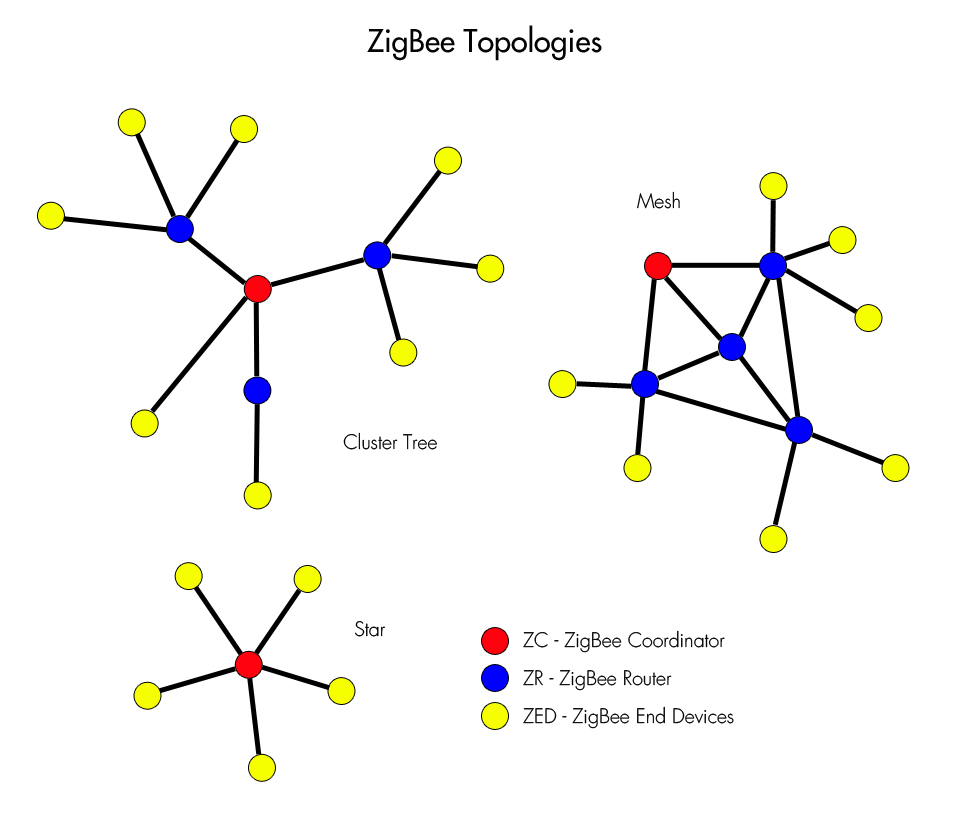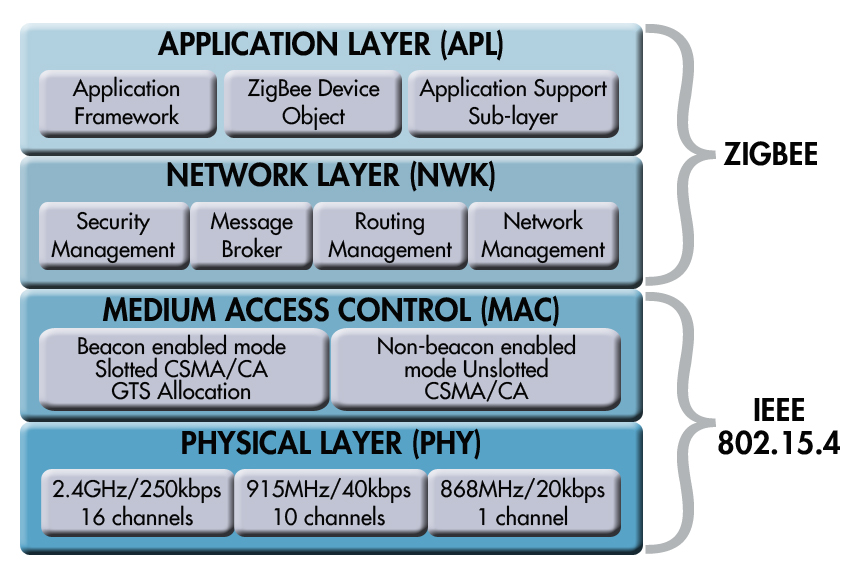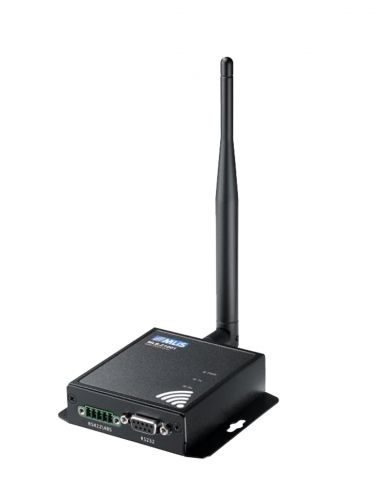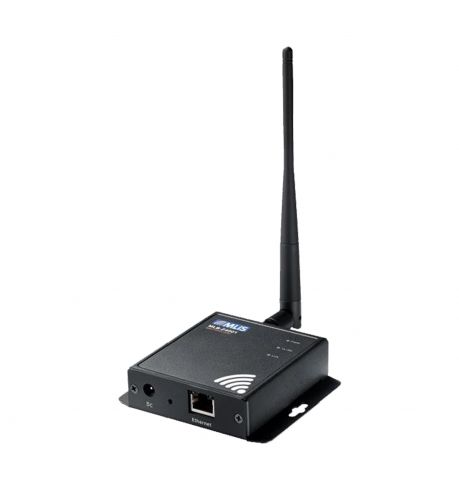In this article:
What is a ZigBee Network? A Concise Overview
A short description of ZigBee networks and how they can be useful in Smart automation and other low bandwidth applications.
The most basic explanation you can give for ZigBee technology is that it’s a network for the exchange of low rates of data over low power devices in close proximity. This makes ZigBee appealing to small scale projects which need wireless communication. In a commercial sense, ZigBee standard networks are perfect for home automation like Smart lighting and temperature control, home entertainment, medical data collection, industrial control, Smart energy, embedded sensing, building safety sensing and many more applications where a low bandwidth is used and the battery life of devices needs to be preserved. The low power rate of devices means transmission of data is limited to between 10m-100m line-of-sight, but within a network of ZigBee devices the data can be spread much further.
Why not just use Bluetooth?
Bluetooth is designed to transmit higher rates of data up to 25Mbps so you can perform tasks such as streaming music. This uses a comparatively high power rate of 1 watt. ZigBee has a data throughput of just 250kbps but only uses between 10 and 100 milliwatts (mW). If you have devices that don’t need high data throughput, and are battery operated, a Bluetooth network would be an unnecessary drain on battery power.
The constituent devices of a ZigBee standard network are divided into 3 types:
Coordinator (ZC): An existing network is wire connected to the coordinator. This is the source of the network, the root of the tree that can bridge to other networks. The ZC stores information on the network and manages security keys and access, acting as the Trust Center. An example of a ZigBee coordinator would be the modems Assured Systems supply at the bottom of this article.
Router (ZR): ZRs can perform a function within the network as well as receive and forward data to and from other devices on the network. An example would be a water meter, reading usage and then transmitting data to a field engineer’s handheld device.
End Device (ZED): A ZED performs a function for an application but not much more. It can receive and respond to its parent node (coordinator or router), but it can’t talk to other devices on the network. This relationship allows the node to rest and preserve battery life. An example would be a light switch on an automated home management system.

The most common network configurations for a ZigBee network are star, mesh and cluster tree.
Star Network: There is one coordinator initiating and managing several end devices (nodes). End devices only communicate with the coordinator. This is fine up to a point until the coordinator becomes bottlenecked.
Mesh Network: In a mesh, the network is extended via several routers connected to the coordinator. Any device can then communicate with any adjacent node. If a node fails the data can be passed to the next node thus providing redundancy, which is a factor in many industries. If however, the router fails, the nodes are lost on the network. This is the most common type of ZigBee network.
Cluster Tree: Parent routers connected to the coordinator have children end devices and this family becomes a cluster. A cluster tree network is like having several star networks branched from the trunk of a coordinator.
The ZigBee Protocol Architecture OSI Model

ZigBee protocol architecture consists of layers built upon the base layers (MAC and physical), of the standard working group IEEE 802.15.4 which defines the operation of ‘low-rate wireless personal area networks’ (LR-WPANs).
Application Layer: Within the Support Sub-layer the services are enabled to allow ZigBee device objects and application objects to interface with the network layer for managing data. The framework provides 2 data services as key value and generic message services. Generic being developer defined whilst key value gets attributes within the application objects.
Network Layer: This layer manages connections and disconnections to devices, routing and configurations.
Medium Access Control (MAC): This layer transmits all the data to and from different networks with carrier sense multiple access collision avoidance (CSMA). The beacon frames synchronize communication.
Physical Layer: Does the modulation and demodulation for signal transmitting and receiving within the designated frequencies and channels.
Industrial M2M (machine to machine) ZigBee Modems
Assured Systems can supply industrial M2M modems for your ZigBee network. These modems are wired to existing networks via serial (MLB-Z1001) or LAN (MLB-Z4001) and act as the coordinator at the root of starting a ZigBee network.
MLB-Z1001

The MLB-Z1001 is designed for RS-232/422/485 communication via any available ZigBee and allows communication between machines in applications such as factory automation. Read more about the MLB-Z1001 here.
MLB-Z4001

The MLB-Z4001 is an Ethernet to 900 MHz RF modem designed for Ethernet communication via a ZigBee network. Using an RJ45 connection Ethernet port, the modem can receive and transmit data over a mesh network. Read more about the MLB-Z4001 here.
About Assured Systems
Assured Systems is a leading technology company offering high quality and innovative applied computing solutions to the embedded, industrial, and digital-out-of-home markets across the world. Headquartered in Stone, England and with offices in North America, our reach is truly global. Our impressive product portfolio includes a full range of Fanless Embedded Computer Systems, Digital Signage & Multimedia Computer Systems, Touchscreen Panel PCs, Human Machine Interfaces, Vehicle Mount Computers, Rackmount Computer Systems, Single Board Computers, Rugged Laptops & Tablets.










